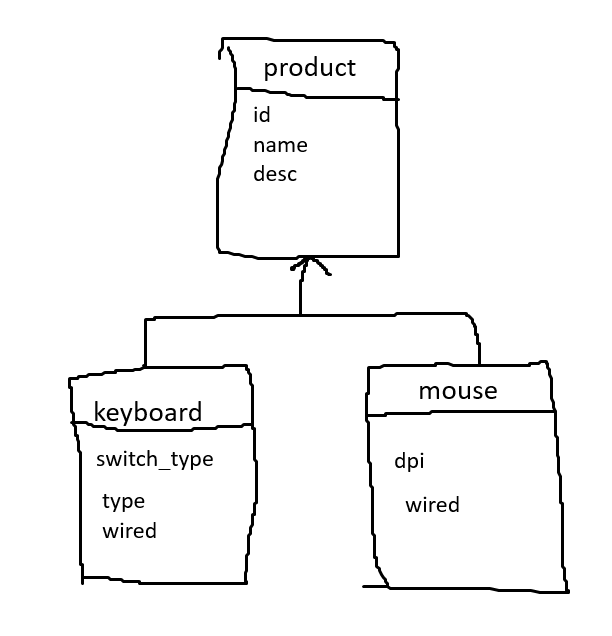I am creating an webshop app. I have a tech shop with products that are for example CPUs, GPUs, keyboards, mouses etc. All of them have common attributes – id, description, name, but also their own, custom attributes – mouses have dpi and keyboards switch type etc.
What would be the best way to create a database and tables in Laravel?
I tried without inheritance first, but it seems complicated when I want to search a product by id, because I also need to pass product type (table name).
What would be the best approach for this problem?





2
Answers
As one comment has already suggested. Polymorphic relationships are the ideal solution to your requirement.
See docs here
You would want a
productablerelationship to theProductas an umbrella to your products holding the shared properties like,description,price,stock_leveletc.Build your tables something like:
And your models
Then you can call the product model to get all products with their shared listing details. Then leverage the
productablerelationship to load in their type-specific details.Also, consider having an
Productabletrait on yourMouseandKeyboardmodels to allow you to define shared methods when required.EDIT:
Productableis probably not the best name for such a trait, maybeHasProductMethodsorIsProductGoing a step further:
If you then define a
Productableinterface, you can treat yourMouseandKeyboardclasses asProductableitems. This is really useful when you want to type-constrain your methods parameters but you want methods that can accept aMouseorKeyboardinstance.For example, you may want to add these items to a basket. The
Basketwould have anaddItem()method. Instead of having to resolve your relatedProductin order to pass aMouseorKeyboardinstance, your can type-hint theProductableinterface and simply pass theMouseor `Keyboard.The main model should look something like this:
Then, lets say in GPU model in its fillable you add its attribute that differs the GPU from the main table
You also need this in GPU controller:
For the component migration, you should make attributes like productable_type and productable_id. The key is in using morph like some other comments said.
Then, in GPU controller, your index method should start with something like this: